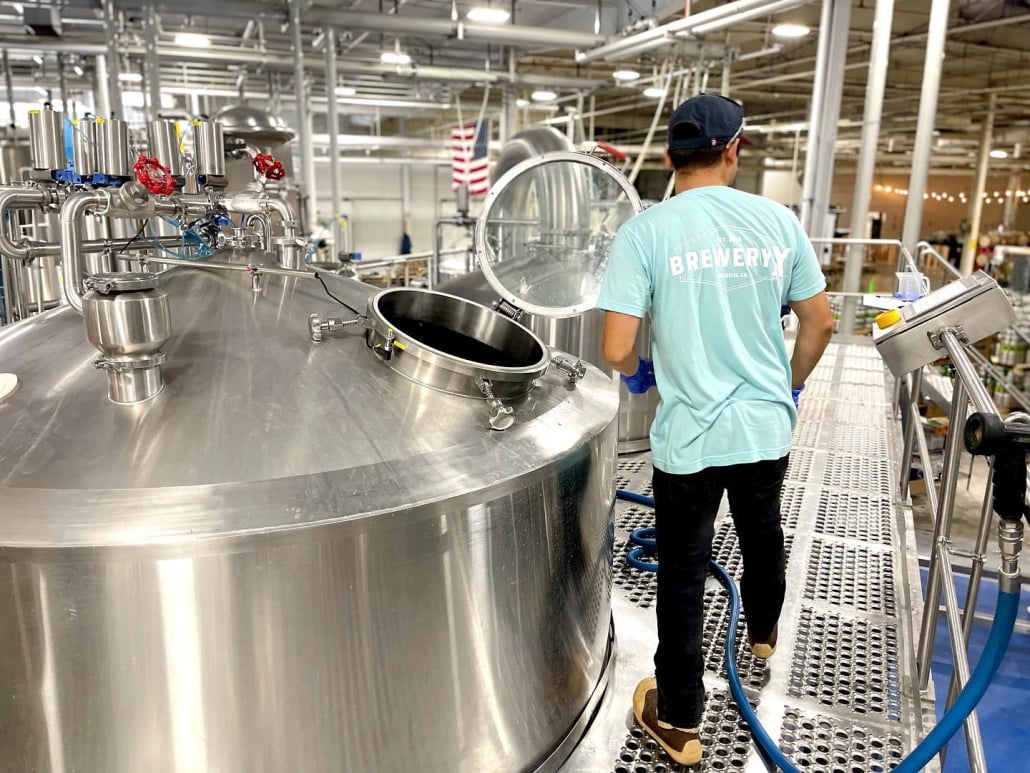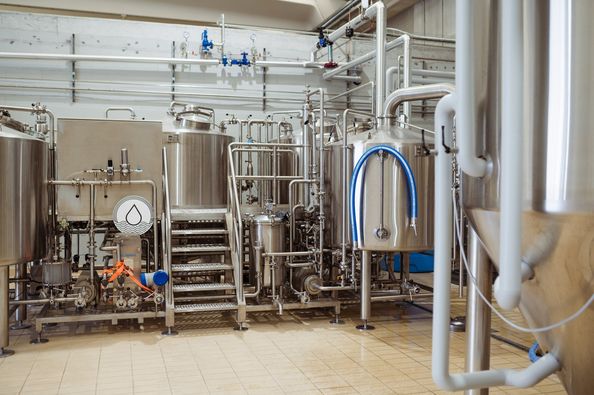Which Beer Is Good For Health
Overview of Beer and Its Health Benefits
Beer has been enjoyed for centuries as a beverage of choice, and in moderation, it can even offer certain health benefits. The key lies in understanding which beers provide potential health advantages and how to incorporate them into a balanced lifestyle. Whether you’re a fan of light lagers, rich stouts, or hoppy IPAs, this guide will explore the health aspects of beer, types of beer that may be better for you, and tips for choosing wisely.
This article delves deep into the science of beer’s nutritional properties, its impact on the body, and strategies for enjoying beer responsibly. We’ll cover topics like low-calorie options, beers with high antioxidant content, and the potential cardiovascular benefits of moderate beer consumption.
What Makes a Beer Healthy?
Before we get into specific beers, let’s define what makes a beer “healthy” in the first place. Factors to consider include:
- Calorie Content: Lower-calorie beers are better for maintaining a healthy weight.
- Alcohol by Volume (ABV): Beers with moderate ABV (4-6%) can be less taxing on the liver.
- Nutritional Content: Some beers contain vitamins, minerals, and antioxidants.
- Ingredients: Beers made with natural, minimally processed ingredients are preferable.
- Sugar Content: Lower residual sugar is better for blood sugar management.

Healthiest Types of Beer
1. Light Beers
Light beers are a go-to choice for those looking to cut calories and alcohol consumption. They typically have fewer carbs and lower ABV than their regular counterparts.
- Examples: Bud Light, Michelob Ultra, Miller Lite
- Why They’re Healthy: Contain fewer calories (around 90-110 per 12 oz) and are easy to drink without overindulging.
2. Wheat Beers
Wheat beers are often unfiltered, retaining some of their nutritional value, including B vitamins and antioxidants.
- Examples: Blue Moon, Hoegaarden
- Why They’re Healthy: Rich in polyphenols, which may reduce inflammation.
3. Stouts and Porters
While stouts and porters are higher in calories, they offer significant amounts of antioxidants and even small amounts of soluble fiber.
- Examples: Guinness, Founders Porter
- Why They’re Healthy: Dark beers often contain more flavonoids, which are known for their heart health benefits.
4. Sour Beers
Sour beers, such as lambics and Berliner Weisse, often have a lower ABV and can contain probiotics due to the fermentation process.
- Examples: Lindemans Framboise, Dogfish Head SeaQuench Ale
- Why They’re Healthy: Probiotics support gut health, and they’re generally lower in calories.
5. IPAs with Low ABV
India Pale Ales (IPAs) are known for their hoppy flavors, but low-ABV versions (often called “session IPAs”) provide the same taste without excessive alcohol.
- Examples: Lagunitas DayTime IPA, Founders All Day IPA
- Why They’re Healthy: Hops contain xanthohumol, an antioxidant with potential health benefits.
Troubleshooting Common Health Concerns with Beer
1. High Calorie Intake
Drinking too many high-calorie beers can lead to weight gain.
Solution: Opt for light beers or session IPAs that deliver flavor without excess calories.
2. Overconsumption
Even the healthiest beers can be harmful in large quantities.
Solution: Limit yourself to 1-2 drinks per day, depending on your tolerance and health goals.
3. Sensitivity to Gluten
Most beers contain gluten, which can be problematic for individuals with celiac disease or gluten intolerance.
Solution: Choose gluten-free beers made from sorghum, rice, or millet, such as Omission or Glutenberg.
4. Alcohol Dependency
Frequent beer consumption can lead to dependency.
Solution: Practice mindful drinking and explore non-alcoholic beer options if needed.
Nutritional Content Comparison: Popular Healthy Beers
| Beer Type | Calories (12 oz) | ABV | Key Nutrients/Benefits |
|---|---|---|---|
| Bud Light | 110 | 4.2% | Low calories, easy-drinking |
| Guinness Draught | 125 | 4.2% | Antioxidants, soluble fiber |
| Blue Moon | 170 | 5.4% | Rich in polyphenols, smooth wheat flavor |
| Lagunitas DayTime | 98 | 4% | Low ABV, antioxidant-rich hops |
| Dogfish Head SeaQuench | 140 | 4.9% | Probiotics, refreshing taste |






How to Choose the Right Beer for Your Health Goals
| Health Goal | Best Beer Options |
|---|---|
| Weight Management | Light beers, session IPAs |
| Heart Health | Stouts, porters, beers high in flavonoids |
| Gut Health | Sour beers with probiotics |
| Gluten-Free Diet | Gluten-free beers like Omission or Glutenberg |
| Reduced Alcohol Intake | Low-ABV beers, non-alcoholic options |
Comparing Pros and Cons of Healthy Beer Options
| Beer Type | Advantages | Disadvantages |
|---|---|---|
| Light Beer | Low calorie, widely available | Can lack flavor compared to regular beers |
| Stout/Porter | High in antioxidants, rich taste | Higher in calories |
| Wheat Beer | Nutrient-rich, flavorful | Slightly higher in carbs |
| Sour Beer | Probiotic benefits, unique taste | May be too tart for some palates |
| Low-ABV IPA | Balanced flavor, reduced alcohol | Hoppy bitterness may not appeal to everyone |

FAQ
| Question | Answer |
|---|---|
| Can beer be part of a healthy diet? | Yes, in moderation. Opt for low-calorie, low-ABV beers with natural ingredients. |
| Which beer has the least calories? | Most light beers, such as Michelob Ultra, have around 90-110 calories. |
| Are dark beers healthier than light beers? | Dark beers often have more antioxidants, but also more calories. |
| Is non-alcoholic beer a good option? | Yes, it’s a great choice for reducing alcohol intake while still enjoying beer. |
| How much beer is safe to drink daily? | Generally, 1-2 beers per day is considered moderate for most adults. |
- Growth of flavorful low-ABV and NA options: session lagers/IPAs and 0.0% craft options expand with better body and aroma via advanced dealcoholization.
- Transparent labeling: more brands list calories, carbs, and ingredients; some add polyphenol or gluten testing data.
- Better-for-you positioning: electrolytes, reduced-gluten processing, and lighter adjuncts (e.g., rice) trend—evaluate evidence behind claims.
- Packaging for freshness: DO control and light-stable hop extracts reduce staling, preserving antioxidant potential and flavor.
- Moderate drinking guidance: public health messaging emphasizes weekly limits and alcohol-free days.
Additional FAQs About Beer and Health (2025)
1) Does beer provide meaningful micronutrients?
Beer can contribute small amounts of B vitamins (B2, B3, B6, folate), silicon (bone health), and polyphenols from malt/hops, but amounts vary widely and should not replace nutrient-dense foods.
2) Are non-alcoholic (NA) beers healthier than regular beers?
Often yes for calorie and alcohol reduction. Many NA beers have 50–100 calories per 12 oz and 0.0–0.5% ABV, helping reduce alcohol-related risks while preserving polyphenols.
3) Do sour or mixed-fermentation beers contain live probiotics?
Some may, but viability after packaging is inconsistent. Treat probiotic claims cautiously unless the brewery provides strain and CFU data.
4) How do hops’ compounds impact health?
Hops contain xanthohumol and related flavonoids with antioxidant/anti-inflammatory activity in lab studies; however, typical dietary exposure from beer is modest.
5) What’s the best way to fit beer into weight-loss goals?
Prioritize low-ABV (≤4.5%) and low-calorie options, alternate with water, set a weekly drink budget, and consume beer with meals to blunt glycemic swings.
2025 Industry Trends: Beer and Health
Nutrition and Market Benchmarks (2024–2025)
| Category | Typical Calories (12 oz) | ABV | 2024 Market Share | 2025 (proj.) | Notes/Source |
|---|---|---|---|---|---|
| Light lager | 90–110 | 3.5–4.2% | ~22% | ~23–24% | Label transparency drives steady demand |
| Session IPA | 95–130 | 3.8–4.9% | ~4% | ~5–6% | Better hop aroma at lower ABV |
| Stout/porter | 120–200 | 4–6% | ~3% | ~3% | Higher polyphenols; higher calories |
| Sour/berliner | 110–170 | 3–5% | ~2% | ~2–3% | Variable live cultures |
| Non-alcoholic beer | 50–100 | 0.0–0.5% | ~2% | ~3–4% | Rapid NA craft growth |
Authoritative references:
- U.S. Dietary Guidelines (alcohol): https://www.dietaryguidelines.gov
- WHO alcohol factsheet: https://www.who.int/news-room/fact-sheets/detail/alcohol
- Brewers Association (market insights): https://www.brewersassociation.org
- NIH/ODS on dietary supplements and alcohol interactions: https://ods.od.nih.gov
Latest Research Cases
Case Study 1: Switching to Low-ABV Beer Supports Caloric Deficit (2025)
Background: Adult beer drinker consuming ~1–2 regular beers nightly struggled to maintain a calorie deficit.
Solution: Replaced four weekly regular beers (~150 kcal each) with session beers (~100 kcal) and two with NA beers (~60 kcal), added two alcohol-free days.
Results: Weekly alcohol calories reduced by ~360–450 kcal; reported improved sleep quality and easier adherence to diet.
Case Study 2: NA Beer as a Post-Exercise Beverage (2024)
Background: Recreational runner sought a social beverage post-run without impairing recovery.
Solution: Adopted NA wheat-style beer (electrolyte-fortified), paired with protein snack; limited alcoholic beers to weekends.
Results: Better perceived recovery and hydration markers (subjective); maintained training volume with fewer next-day fatigue complaints.
Expert Opinions
- Dr. Eric Rimm, Sc.D., Professor of Epidemiology and Nutrition, Harvard T.H. Chan School of Public Health
Key viewpoint: “Any potential cardiovascular benefit of alcohol applies only with light to moderate intake; risk rises quickly beyond that. NA and low-ABV beers can help people stay within limits.” - Dr. J. Ben Hurlbut, Ph.D., Food and Beverage Scientist
Key viewpoint: “Polyphenols in beer contribute to flavor and may confer minor antioxidant effects, but they don’t offset harms from heavy drinking—dose and pattern matter.” - Dr. Shelly McGuire, Ph.D., Registered Dietitian and Nutrition Researcher
Key viewpoint: “For weight management and sleep, cutting alcohol days and choosing lower-calorie, lower-ABV beers are pragmatic steps with immediate benefits.”
Practical Tools and Resources
- Alcohol intake tracking:
- NIAAA “Rethinking Drinking” calculators: https://www.rethinkingdrinking.niaaa.nih.gov
- Nutrition and labeling:
- USDA FoodData Central (beer entries): https://fdc.nal.usda.gov
- Health guidance:
- CDC alcohol and health: https://www.cdc.gov/alcohol
- WHO SAFER initiative: https://www.who.int/initiatives/safer
- Athletic/recovery context:
- ACSM hydration guidance: https://www.acsm.org
Last updated: 2025-09-30
Changelog: Added 5 targeted FAQs, 2025 nutrition/market trends table, two practical health-oriented case studies, expert viewpoints, and curated tools/resources with authoritative links.
Next review date & triggers: 2026-03-31 or earlier if new dietary guideline updates, significant NA beer market shifts, or peer-reviewed studies on beer polyphenols and health are published.
Share this entry
Interested in learning more about Brewing Systems including additional details and pricing information? Please use the form below to contact us!
YOLONG BREWERY EQUIPMENT FAQS
- Commercial Brewery / Craft Brewery / Microbrewery / Nanobrewery
- What is The Difference Between Craft Beer and Industrial Beer?
- The Bespoke Differences In Custom Brewing Systems
- Everything You Need to Know About Kettle Souring
- How to Choose Brewing Equipment for Your business?
- How To Choose The-Best Partner To Build Your Commercial Microbrewing System?
- Two Detection Sensors That You Need To Use In Your Brewhouse System
- Remote Control Applications in Brewing Equipment/How does it work?
- How To Clean Your Brand New Brewery Tanks?
